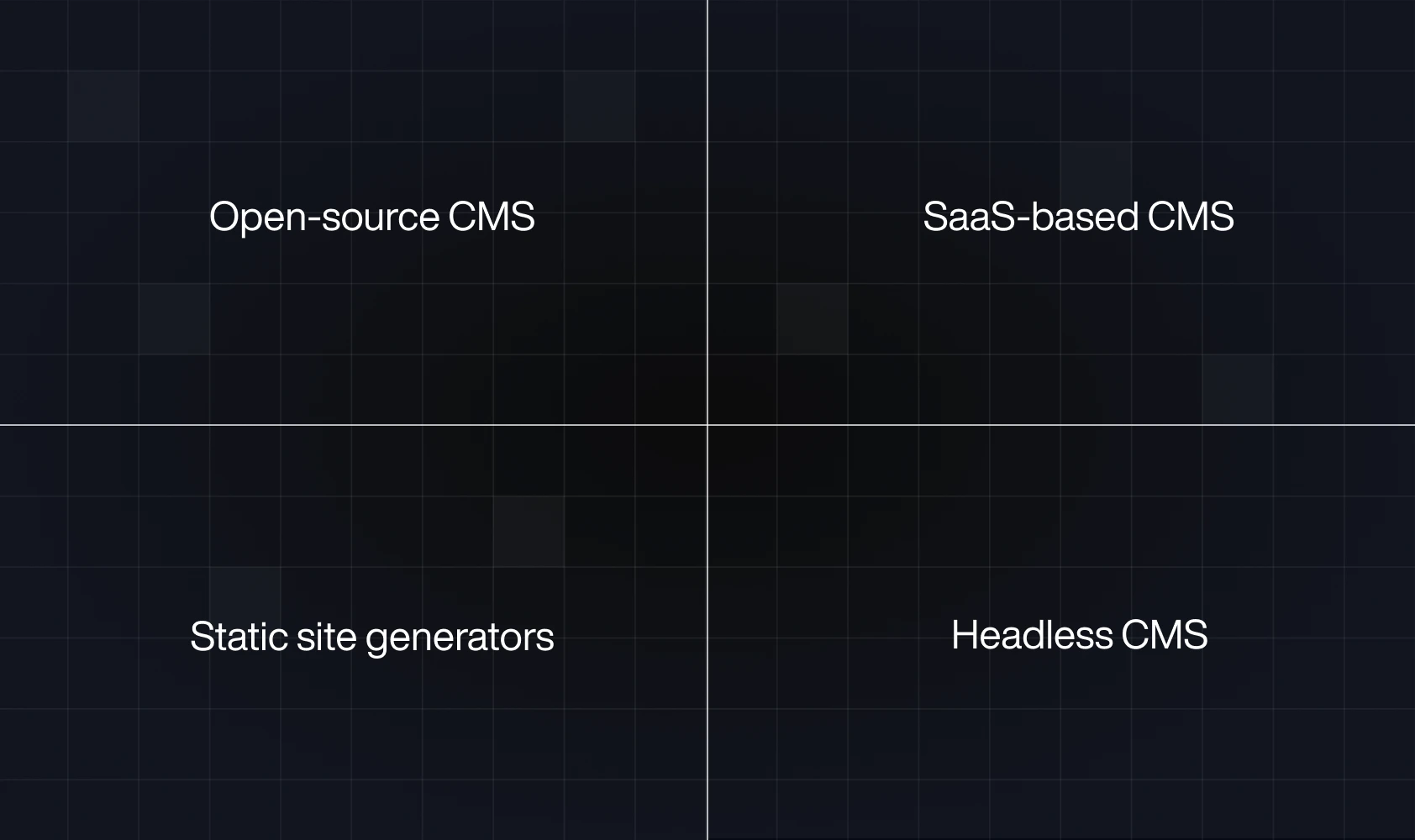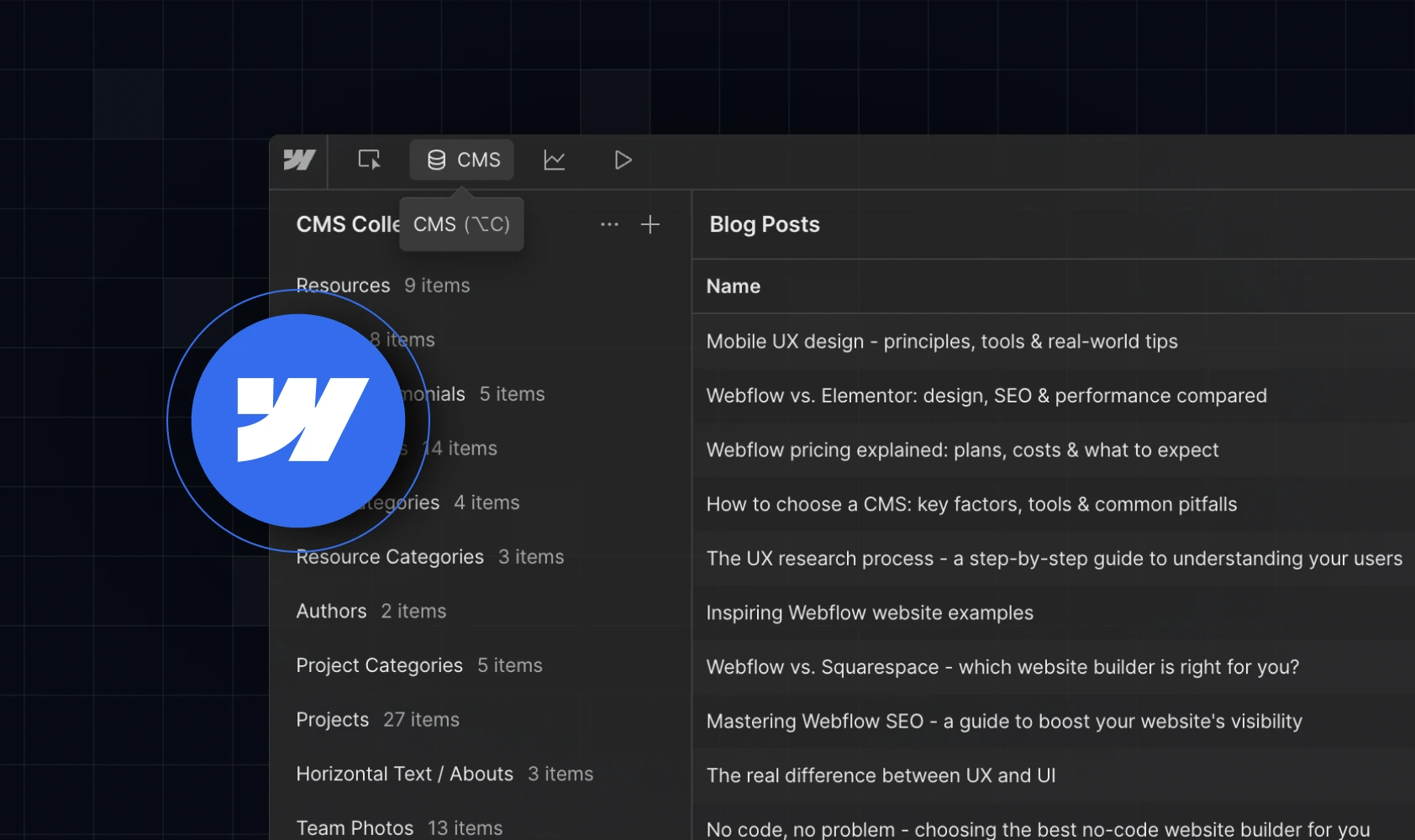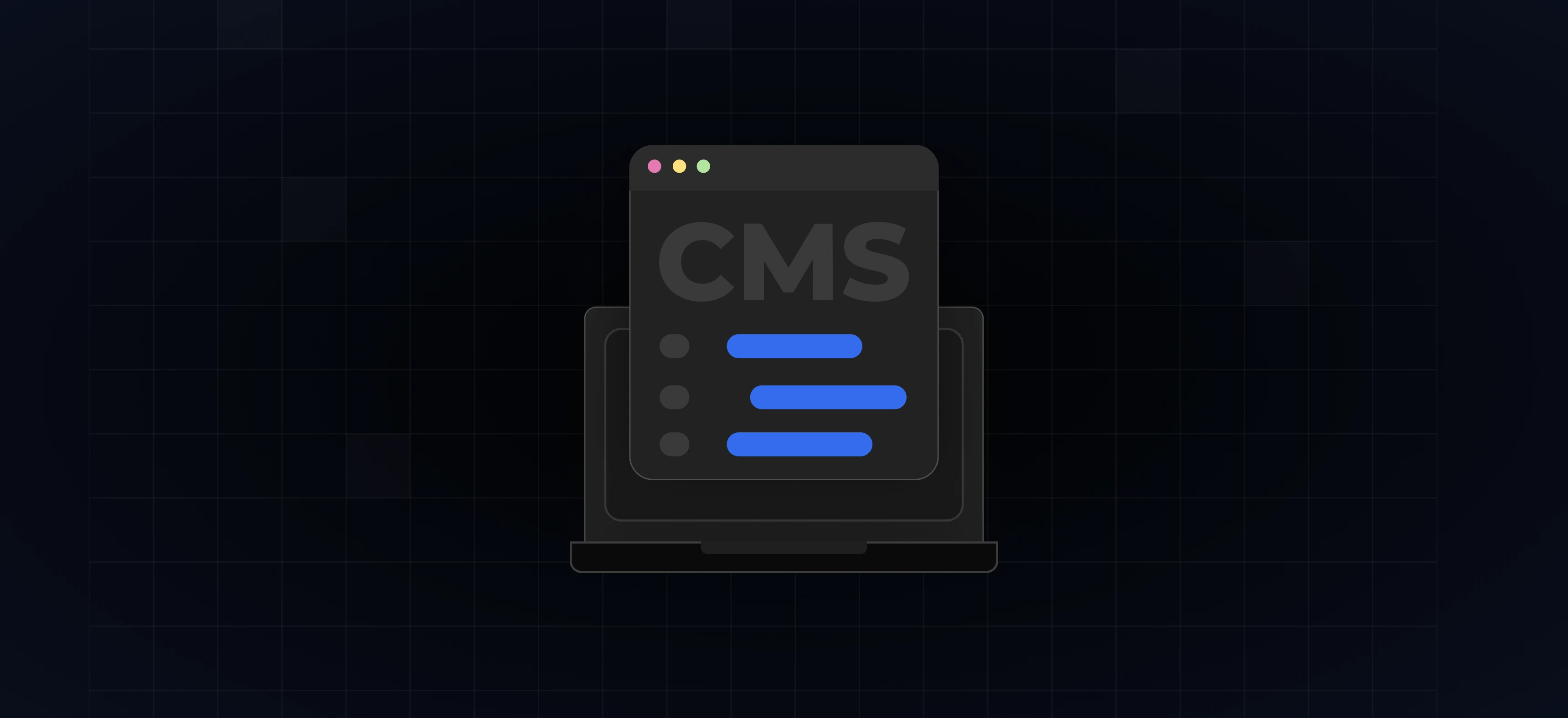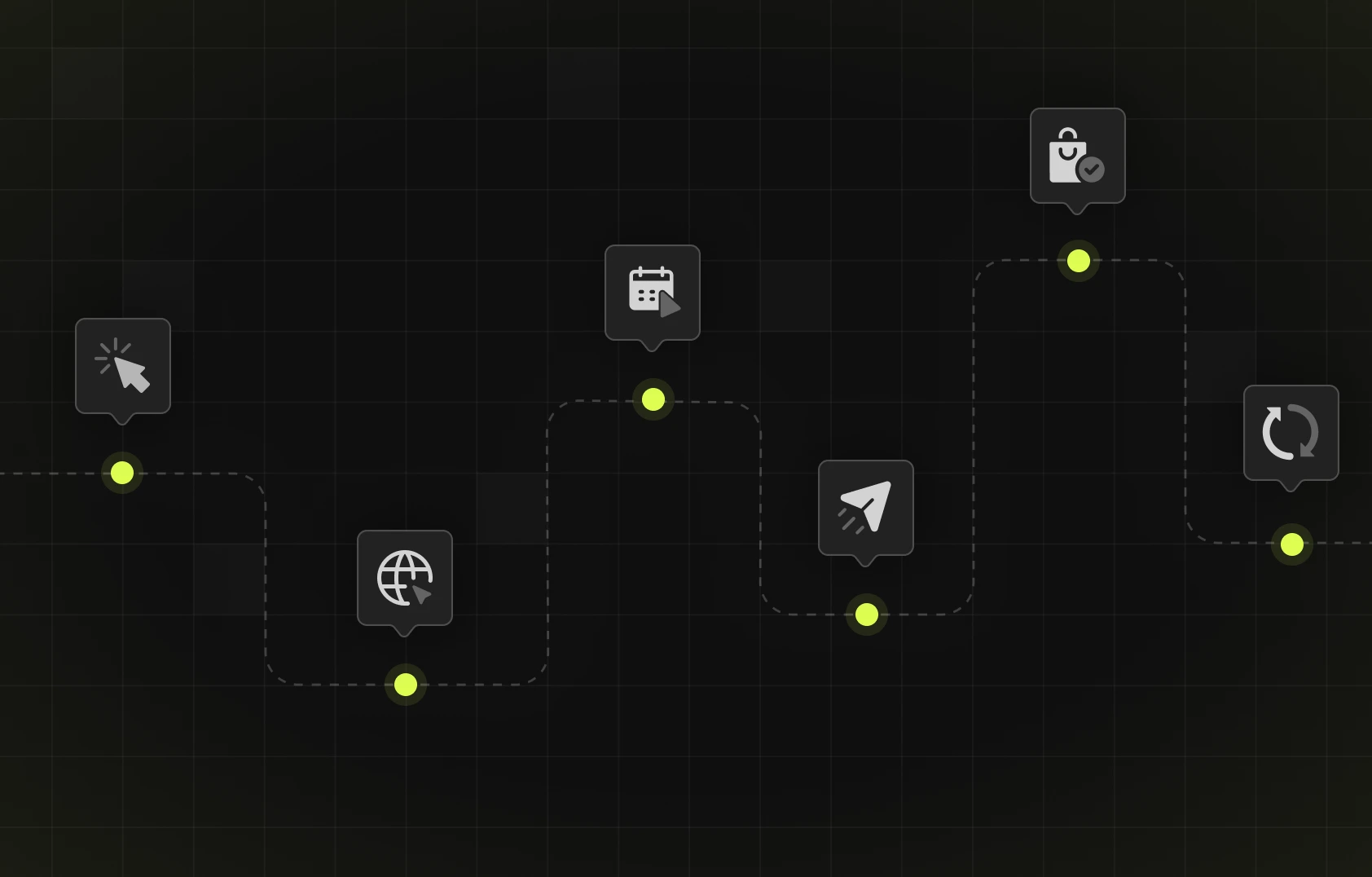Table of content
With a vast number of different Content Management Systems and new ones constantly being developed, it’s not always easy to make the right choice for your website. So, how to choose a CMS that is completely in line with your needs and business goals? For those not ready to risk it, we prepared a simple guide to help you pick an option most suitable for your requirements and workflow.
First things first - what is a CMS?
A CMS is a software system that helps you create, publish, and edit site content easily, with no technical coding skills needed. On top of that, it houses all of your content and makes team collaboration smoother.
A good CMS handles the basic infrastructure elements, so you can focus your attention on creating high-quality website material. Without it, you would need to build and manage each web page manually. With all the time and resources they save, these systems are an invaluable tool for all businesses, from small to enterprise-level ones.
How does a content management system work?
A CMS simplifies website management by separating content from design. It typically includes two key components:
- Content Management Application (CMA) - the part where you create, edit, and organize content with the help of a visual interface.
- Content Delivery Application (CDA) - the part that displays the content on the site according to your design.
The CMS first stores your media and text in a database and then uses predefined layouts to display everything on your site. Ultimately, it allows users with no technical web development knowledge to update pages with ease. It’s also beneficial to developers and coding experts since it allows them to focus on more advanced web-building elements, such as customizing features and adding new functionality.
How to choose a CMS - the key types of CMS platforms
Before choosing a CMS, it’s worth understanding the main types available. Each CMS platform type comes with its own strengths (and limitations) and is designed to support different kinds of users and project needs. Depending on what you wish to achieve, you’ll be able to choose:
- Open-source CMS
Open-source CMS is free to use and highly customizable. However, it puts you in charge of hosting, updates, and security.
Examples: WordPress, Joomla, Drupal
Best for: Blogs and content-heavy sites
- SaaS-based CMS
SaaS-based CMSs are cloud-hosted and maintained by the provider. These platforms don’t require you to deal with servers, updates, or security patches.
Examples: Webflow, Wix, Squarespace
Best for: Startups, small businesses, freelancers, and marketers looking for a quick and reliable setup.
- Headless CMS
Headless CMSs focus only on managing content, which can then be delivered to any device or frontend via API.
Examples: Contentful, Sanity, Strapi
Best for: Teams that need to distribute content to multiple platforms from a single source
- Static site generators
Static site generators turn content into static HTML files, making sites fast and secure. Their setup, however, requires more tech knowledge.
Examples: Gatsby, Hugo, Jekyll
Best for: Developers creating high-performance, low-maintenance websites.

What to consider when choosing a CMS
Assuming you have a good idea of which CMS type suits your business, the next step is choosing the specific system of the selected type. But which feature is most important in choosing the right CMS? There are several factors you need to keep in mind, such as:
#1 Ease of use
A highly intuitive CMS definitely brings many advantages, since it allows easy content management. However, keep in mind that other platforms that are more difficult to master may come with other benefits, such as high flexibility and security.
Depending on your team’s competencies and technical knowledge, you’ll be able to opt for either beginner-friendly systems or systems with a steeper learning curve. In the end, it’s up to you to find which option is more suitable for your team and business.
#2 Design flexibility
If the CMS you choose is the right fit for your business, it will be able to adapt to all of your needs. It would allow you to create, publish, and manage your content seamlessly, no matter the type of your content (e-commerce, blog, dynamic content, etc).
It’s also important to choose a CMS thatintegrates well with other systems. These integrations can be a great way to boost your efficiency, personalize content based on customer data, and make overall better marketing strategies.
In the end, this flexibility also refers to scalability. You need a CMS that can support your business growth.
#3 Customization and plugins
Choose a CMS that allows you to tailor your website to your brand, achieve exceptional functionality and a user-centric design. Plugins, templates, and themes your CMS offers should be highly customizable in order to suit the specific needs of your business.
If you’re not choosing an all-in-one web builder, such as Webflow, it’s also important to assess which plugins are available with the CMS you’re considering. Besides availability, it’s also necessary to learn about their quality. A strong ecosystem of reliable, well-supported tools can make a big difference.
#4 Performance
Performance and website usability play a key role in how users experience your site and, therefore, how likely they are to stay. A high-performing CMS should support fast loading times, minimal downtime, and smooth interaction. Keep in mind that some CMSs are optimized right from the start, while others might require additional tuning to meet the highest performance standards. Choosing a CMS with strong performance capabilities can significantly improve your site’s reliability, user satisfaction, and even SEO.
#5 SEO features
Before you opt for a CMS, make sure to completely understand how it handles web SEO elements. It’s important to choose a CMS that will strongly support your SEO strategy with features like fast loading times, high responsiveness, customizable URLs, and so on.
#6 Scalability
It’s only natural to plan for your business to grow. However, the chosen CMS should be able to handle the extra work. When you grow and expand, it’s expected to experience increased web traffic and content demands, so you need a system that can adjust to it.
#7 Cost
For some, the price of a CMS is the first thing to consider. However, you need to take into account more than just the initial cost. Count on the budget for licensing, implementation, optimization, and updates.
The CMS prices range from cost-free options to the annual cost of several hundred dollars (for enterprise-level businesses). It’s important to assess your needs, get to know thoroughly the CMSs you’re considering, and then invest in a CMS that has all the features that will help your business. It’s also worth remembering that the costliest option is not always the best, since it may not fit your CMS requirements.

Which CMS should I use? Matching the CMS to your use case
As we already pointed out, not every CMS works for every type of user. So, how to choose a CMS system that is right for you? It depends on your goals, content, as well as technical resources and knowledge. To give you a more practical sense of what works best for different types of users, we’ve broken things down into common use cases:
- The blogger - bloggers want a simple way to publish regular content and grow an audience. The best fit for bloggers can be WordPress since it’s easy to use, highly customizable, and built with content publishing in mind. After all, WordPress did start as primarily a blogging platform.
- The startup - startups need a sleek website that’s quick and easy to build and update. That is why we consider Webflow the best option for them. Webflow offers design flexibility, great performance, and no-code web design solutions.
- The agency - how to choose a CMS for your agency? They often manage multiple clients and projects with varying needs, so they can benefit from Webflow or, for example, Craft CMS. Craft offers full developer control and multi-site support, while Webflow is ideal for agencies that value speed and visual design freedom.
- The e-commerce brand - online shops need CMSs that integrate smoothly with e-commerce features. In this case, it’s best to use Shopify or WooCommerce (on WordPress), which are tailored for online stores.
- The team with multi-channel needs - teams that manage a high volume of content across different platforms need a CMS that can keep up. A headless CMS like Contentful is a great fit.
Questions to ask before you commit
Before settling on one CMS, there are some important questions you should take time to answer. So you’re sure you’re making the right call, ask yourself:
- Will I need developer help, or do I want something I can manage solo?
Some platforms are beginner-friendly, while others require technical know-how.
- How much control do I want over design and layout?
Think about whether pre-made templates are enough, or if you need full creative freedom.
- Do I need e-commerce features?
Make sure your CMS supports product listings, payments, and inventory, if that’s the direction you see your business growing.
- What’s my long-term plan for content and growth?
Choose a system that can scale with your business and content needs, not one that suits only the current requirements.
- Do I need to publish content across multiple channels (like apps or smart devices)?
If yes, a headless CMS might be the best route.
Popular CMS options at a glance
With so many CMS options out there, it helps to see how the most popular ones stack up side by side. Below is a quick comparison of five widely used platforms, based on key CMS factors, so you can quickly spot what fits your needs best.
How to choose the right CMS? Avoiding common mistakes
It’s easy to get overwhelmed when picking a CMS, and even easier to miss a few key things in the process. We’ve seen teams run into the same issues again and again with things that could’ve been avoided with a bit more clarity up front. Here are some common mistakes worth keeping in mind before you make your choice.
- Not considering everyday users
It’s easy to get caught up in technical features and forget about the people who will actually use the system daily. You need to make sure your team is comfortable using the tool you choose.
- Failing to plan for growth
A CMS that fits your current setup might not keep up as your content, traffic, or feature needs grow. Think ahead and choose a platform that can scale with your business over time.
- Overlooking the true cost
Be sure to account for additional costs like setup, training, updates, third-party integrations, and any premium add-ons. On top of that, don’t settle for the cheapest (or the costliest) option just because of the price. Make sure it fits your business and your goals.
- Ignoring security considerations
Security should never be an afterthought. Make sure the CMS gets regular updates, protects user data, and includes basic features like user permissions and backup options.
FAQs about CMS platforms
Can I switch CMSs later?
Yes, but it’s not always simple. Moving from one CMS to another can involve content migration, design rebuilds, and technical adjustments. If you think you might outgrow your current CMS, choose a new one that offers flexibility or easier export options.
Is WordPress still the best?
What is the most demanded CMS worldwide? It’s certainly WordPress. But is it the best option for your needs? It’s yet to be determined. WordPress is still one of the most popular and versatile platforms out there, but it's not always the best fit. If you’re after more design control without plugins or coding, tools like Webflow (especially combined with the help from the right Webflow experts) might be a better match. That’s why many designers have opted for WordPress to Webflow migration.
What’s the most beginner-friendly CMS?
Platforms like Wix are great for beginners, especially those without technical experience. They offer visual editors and simple interfaces that make it easy to design and update a site. However, they also tend to come with some limitations compared to more complex systems.
Do I need hosting for my CMS?
It depends on the platform. Open-source CMSs like WordPress require you to arrange hosting separately. SaaS platforms like Webflow or Shopify include hosting in their plans.
Can I manage multiple sites from one CMS?
Yes, but only some platforms offer this feature. WordPress Multisite, Webflow (with Workspaces), and certain headless CMSs allow you to handle multiple sites under one account or dashboard.
Final thoughts - choose now, plan for later
There’s no such thing as a perfect CMS - just the one that makes the most sense at the moment. The good news is that you don’t need to get everything right from day one. What matters most is making an informed choice that supports your goals and the direction your business is heading.
If you’re still unsure which options to choose, we’re here to help. At Devolfs, we’ve guided startups, agencies, and growing teams through the CMS maze. We can do the same for you, so feel free to contact us.





%201.svg)






